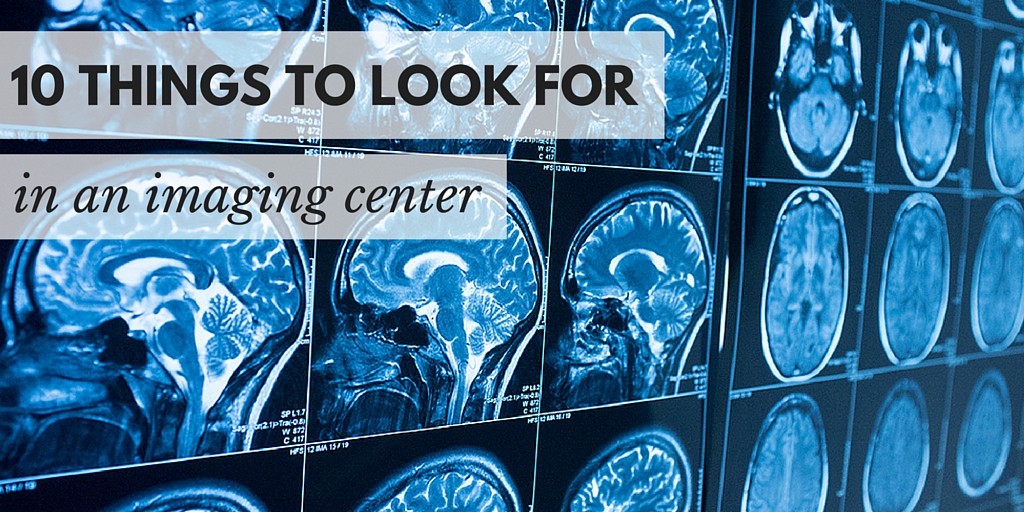When your doctor decides it’s time to get a clearer picture of what’s causing your stomach pain, or you’ve hit 40 and need to schedule your first mammogram, you will be referred for diagnostic imaging. Just like when you’re looking for a dentist or a primary care provider, you want to do your research and find the best clinic for you. There are a few different things that make a great imaging center—here’s what to look for.
1. Medical team and expertise
Before you schedule your appointment or go to your exam, take a look at the medical imaging clinic’s website and get to know the business. Most likely, you don’t interact with the radiologist (your exam is performed by trained radiologic technologists, and the radiologists analyze your exam on screen in a separate dark room), but you still want to be comfortable knowing the doctor reviewing your exam is qualified and experienced. Most websites offer bios of their doctors and their medical team, look for specialty training and certifications.
2. The most appropriate exam
Remember, this is diagnostic imaging. The pictures are to help doctors understand what is causing you pain or illness. The radiologist works with your primary care provider or the specialist who referred you for imaging to make sure you’re getting the right exam, saving you time, money and potentially unnecessary radiation exposure.
3. State-of-the-art technology
Much like the most advanced smart phone or TV, technology in medicine is always changing especially in imaging technology. Mammograms can now be viewed by the radiologist in 3-D, meaning the breast tissue is more dimensional, in slices, allowing for a more accurate read. This eliminates false positives and also reduces anxiety for the patient. MRIs are also seeing improvements, with more power for cleaner reads and a wide-bore, or open MRI to enhance patient comfort.
4. Somewhere that won’t break the bank
Shop around for clinics that offer the most affordable exams and always make sure that your exam and the clinic is covered by your insurance provider.
5. Scheduling ease and availability
Nothing is worse than waiting to find the right answers. If you call to schedule your appointment but can’t get in for two weeks, you should look for another clinic. Most top imaging centers try to get their patients in for diagnostic imaging within 2 – 5 business days.
6. Customer service and friendly staff
Outpatient imaging centers have a very large staff who you interact with: schedulers, receptionists, radiologic technologists and sometimes the radiologists. The clinic knows that every interaction each employee has with the patient is important. If you don’t feel like you’re treated with respect and compassion, move on.
7. Positive reviews and recommendations
Word of mouth is still the most basic and effective form of marketing, especially in the world of health care. But in today’s modern world, every business has some sort of online review available. Check their Facebook page, Yelp or Google reviews. Most importantly, ask your primary care provider or the physician referring you for images which clinic they prefer.
8. Easy access is key
Outpatient clinics by design provider greater ease than getting images in a hospital setting. Look for something close to home or near where you run errands. Your exam doesn’t take all day, if you can, look for appropriate care close to home.
9. Comprehensive women’s imaging
Mammograms are the only diagnostic imaging exam that patients can self-refer. Once you hit 40, you know to schedule your exam every year. Most clinics should have comprehensive women’s imaging in case your doctor needs a better look or needs to do a breast biopsy in the clinic. Just like the dentist or your primary care provider, you want to establish yourself with the clinic for your annual mammogram.
10. Safe and professional atmosphere
This goes without saying really, but you should always make sure the facility is clean and comfortable and prioritizes patient safety and privacy. Getting images is stressful enough, so make sure you feel as comfortable as possible in the waiting room and during your exam.
Written by: Marysa Stevens


